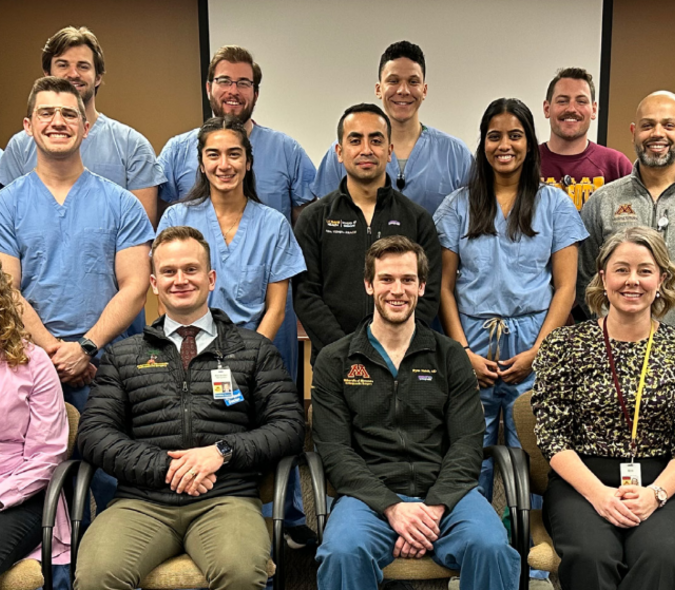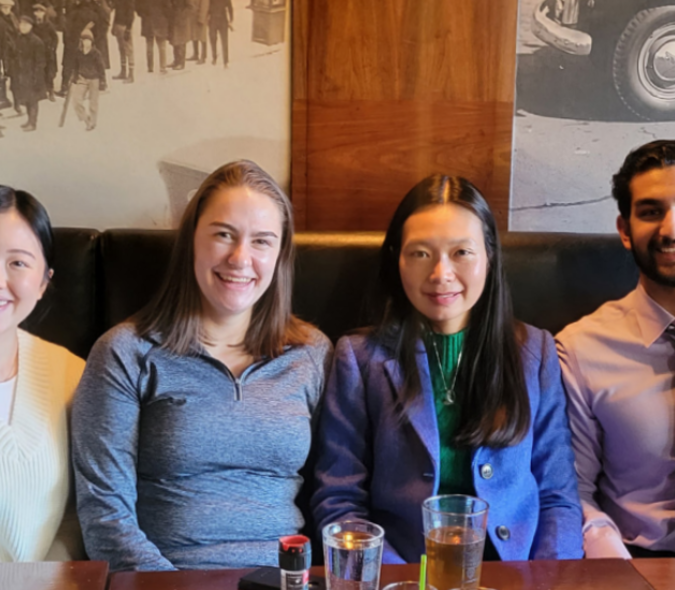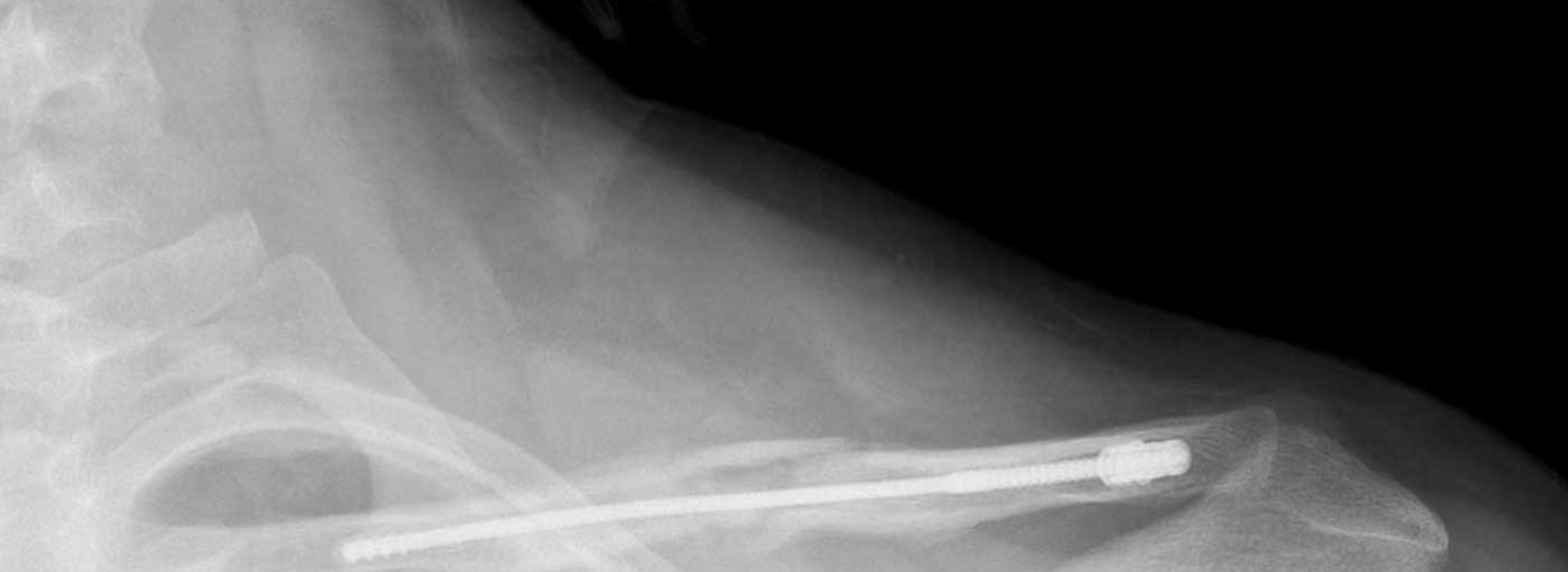
New Device Sparks Call for Innovation in Patient Care: Introducing the Anser Clavicle Pin
In the fast-paced world of medicine, innovation stands as a beacon of hope, offering transformative solutions that can redefine patient care. One such trailblazer is orthopedic surgeon and Assistant Professor Paul Hoogervorst, MD, PhD, whose visionary approach to addressing midshaft clavicle fractures has brought forth the Anser Clavicle Pin.
Not only does the device challenge conventional treatment methods, but it also stands as a testament to the power of innovation. As the Department of Orthopedic Surgery seeks to improve patient care, it is through such bold and imaginative solutions that the field can progress and confront the unsolved problems we face.
Innovative Intramedullary Solution
The Anser Clavicle Pin (“the pin”) is a minimally-invasive intramedullary solution designed to promote fast and less traumatic recoveries for patients with midshaft clavicle fractures. Its slim, rotationally-free design aims to minimize discomfort and facilitate healing, while also promoting a smooth recovery process free of postoperative scarring or bumps.
While the vast majority of existing midshaft fracture solutions rely on absolute stability, the Anser Clavicle Pin breaks away from convention by utilizing relative stability or a “bridging principle,” anchoring itself on both sides of a fracture while allowing any fragments in between to undergo natural healing. This concept supports a restorative environment for secondary bone healing, allowing the body to orchestrate its inherent regenerative processes.
The pin’s adaptability is also a key attribute, allowing for customization based on each patient's unique requirements.
"The pin has a lot of these little indentations that show the range in which the length of the pin can differ. You trim the pin to the appropriate length needed for the patient," explains Hoogervorst.
To facilitate the application of the pin, a comprehensive six-piece reusable instrument toolkit is supplied. The sustainably crafted kit serves as an accompaniment to the pin and ensures precision and efficiency throughout the fracture treatment procedure.
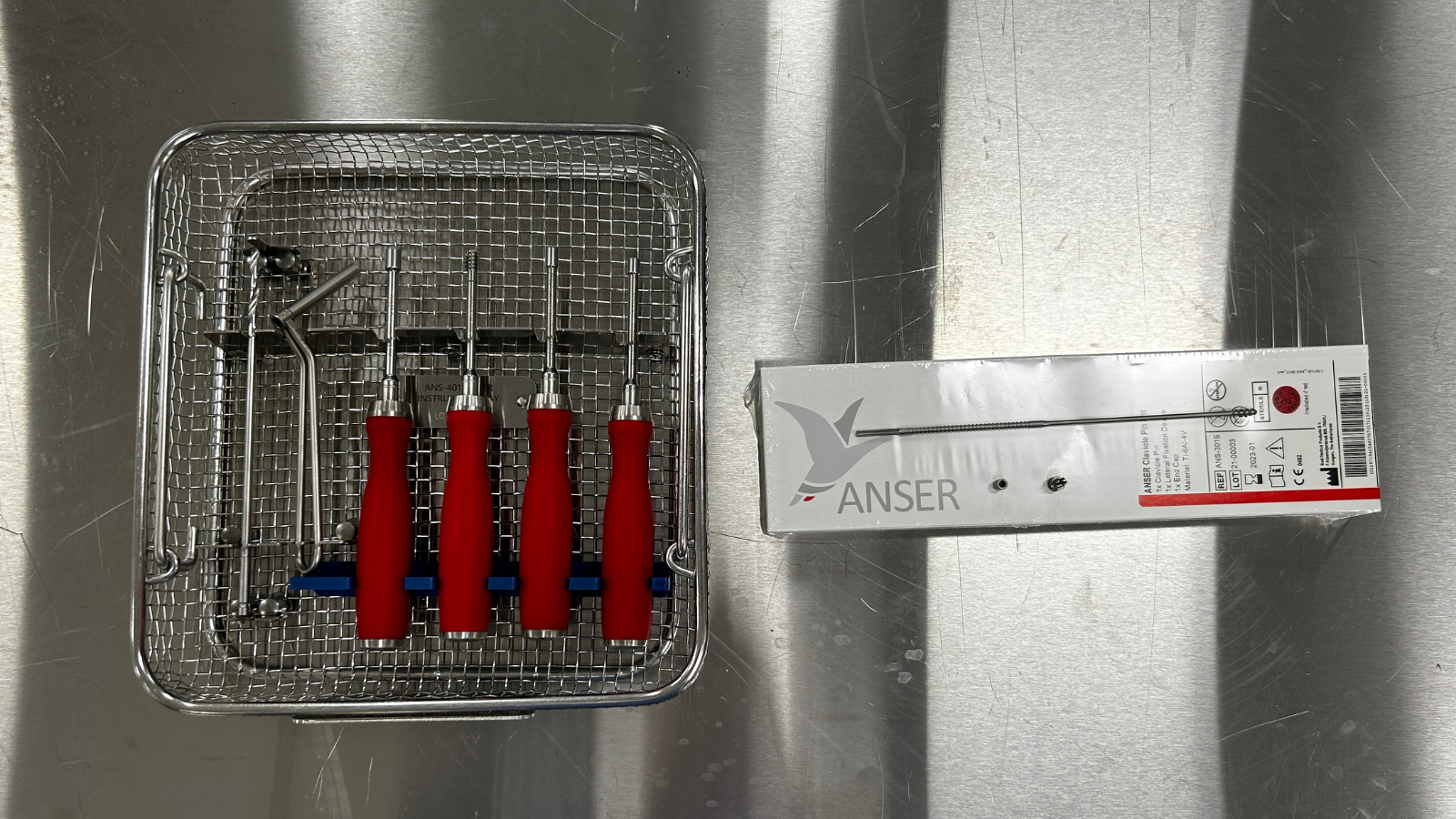
6-piece reusable toolkit for the Anser Clavicle Pin |
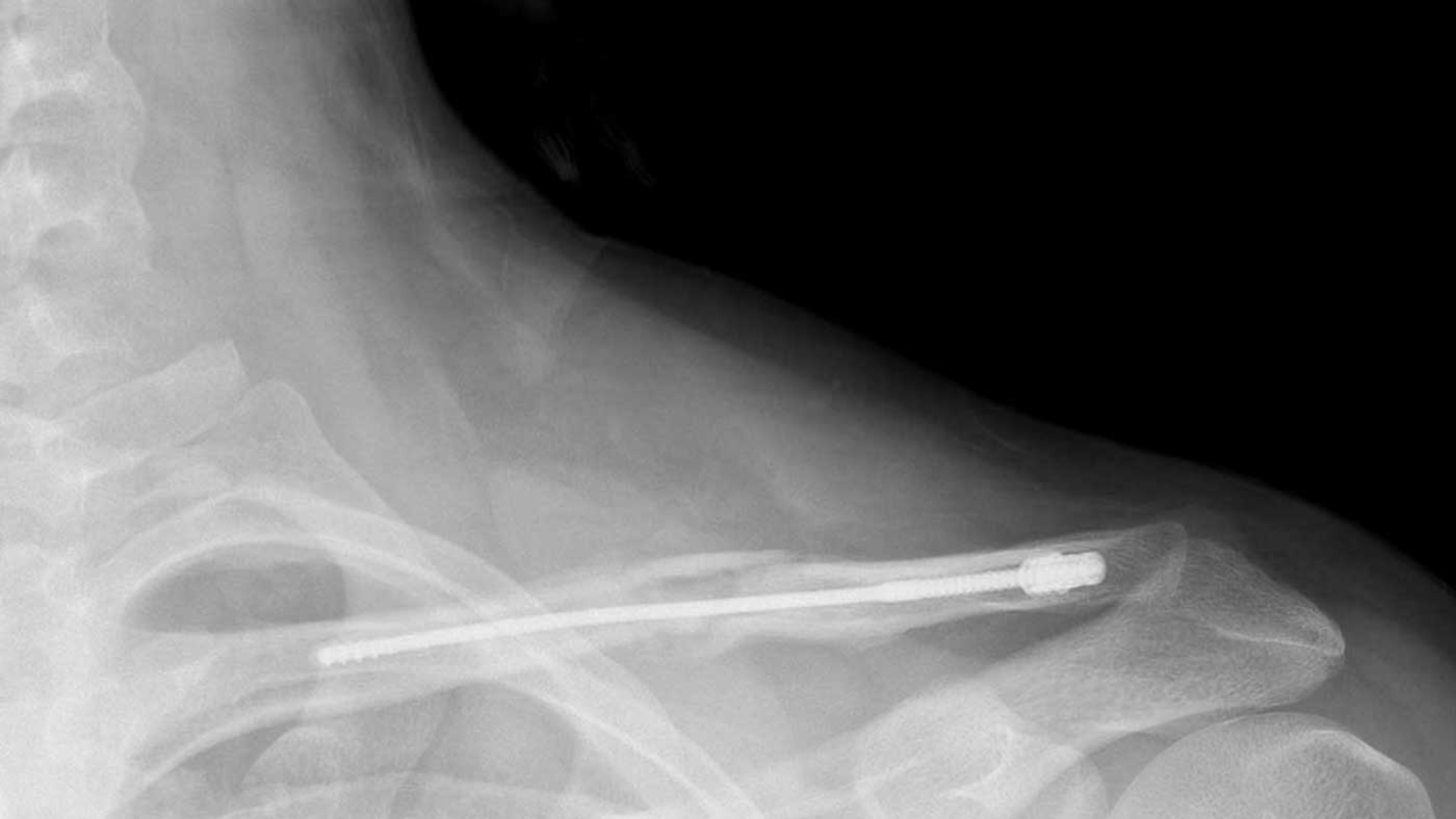
X-ray imaging of the Anser Clavicle Pin |
Setting a New Standard
Although not the first intramedullary device on the market, the Anser Clavicle Pin distinguishes itself through mindful design aimed at addressing common issues associated with other intramedullary devices, including protruding hardware, device migration, and wound breakdown.
Additionally, unlike traditional plate treatments for midshaft clavicle fractures, which typically involve large incisions and can result in prominent scarring, sensory nerve damage, and the need for secondary interventions due to implant-related irritation, the pin stands out for its less invasive features. This design not only avoids the necessity for extensive bone exposure, but also reduces the likelihood of large scars, thereby maintaining the skin's aesthetic integrity.
Secondary surgeries following plate treatments for clavicle fractures are indeed quite common, with one study¹ by former University of Minnesota faculty member & orthopedic surgeon Matthew Putnam, MD, reporting that 83.0% of patients underwent device removal or revision surgeries during their two-year follow-up. While specific figures may vary among studies, one undeniable fact remains consistent: secondary surgery is a frequent occurrence in plate treatments.
In contrast, the Anser Clavicle Pin was meticulously crafted as a lasting remedy, aiming to circumvent the need for multiple surgeries.
"The goal is to leave the pin in permanently, and the surgical entry points are decided upon in such a way to substantially reduce the number of re-interventions. Ideally, it can and should be left in place," explains Hoogervorst.
While it's important to acknowledge that there may still be rare cases where re-intervention is necessary, the pin itself has demonstrated a remarkable reduction in such instances.
Hoogervorst stresses, “Even if you get re-interventions down to five percent, that is a huge win for patients, surgeons, and society.”
From Concept to Creation
Dr. Hoogervorst's inspiration for the pin traces back to the early days of his residency when he was confronted with the limitations of existing treatment options for midshaft clavicle fractures.
Reflecting on the inadequacies of both non-surgical methods and traditional plate-and-screw approaches, he sought to explore alternative solutions that could address the shortcomings he observed while in training.
"I took the time to think about the concepts behind all these devices and ask myself why would it be that they’re not ideal? Or, how could the treatment be optimized?" explains Hoogervorst.
Armed with a checklist of characteristics and features that an ideal implant should possess, Hoogervorst conceptualized the Anser Clavicle Pin. His creative spark, when translated into a tangible design, caught the attention of Albert van Kampen, MD, PhD, Professor of Orthopedics, and Nico Verdonschot, PhD, Professor of Biomechanics at the Radboud University Medical Center in Nijmegen, the Netherlands. Recognizing the potential of the device, they provided the initial impetus for development, offering departmental funding to turn the concept into reality.
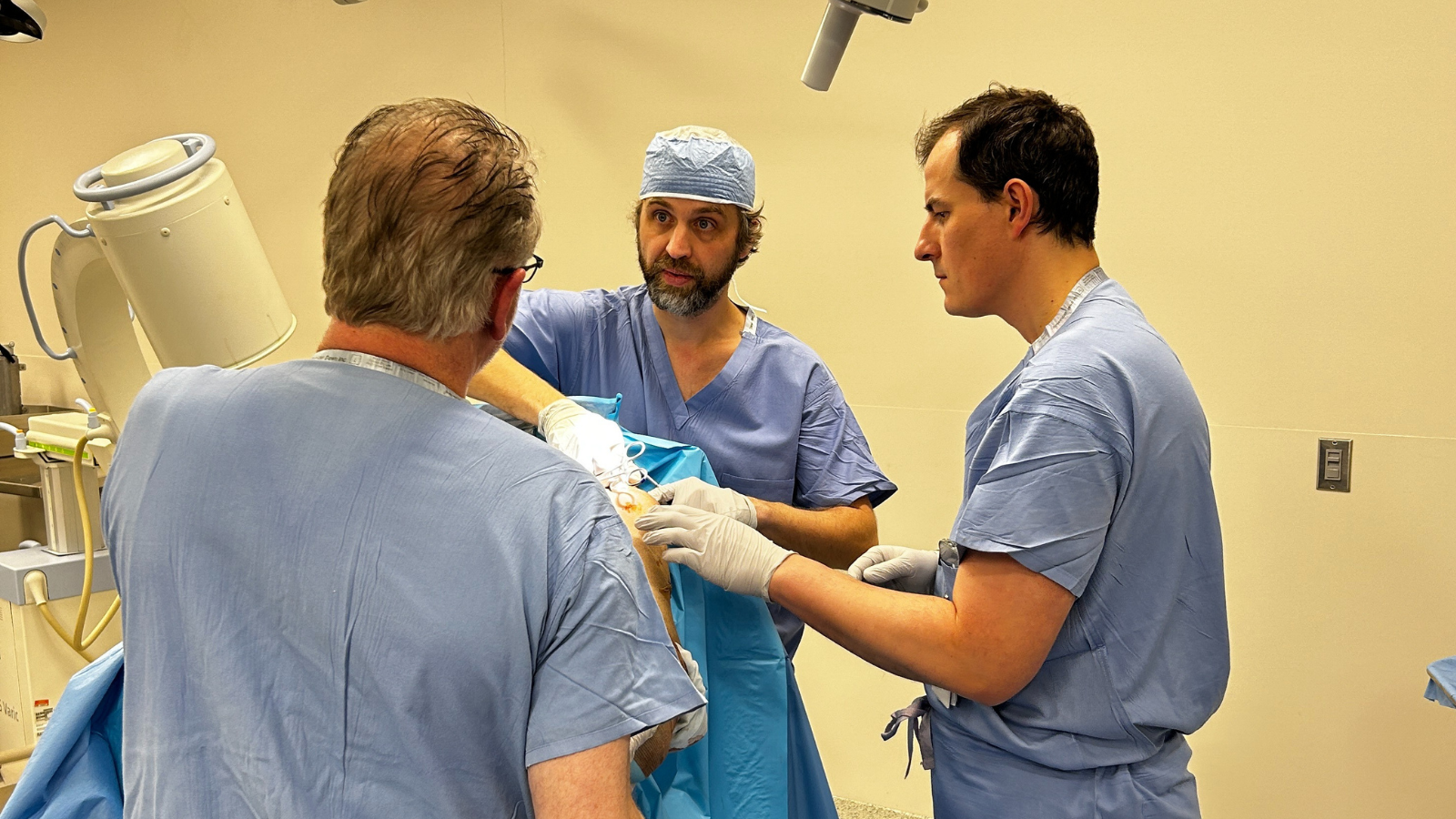
Dr. Hoogervorst demonstrating pin placement |
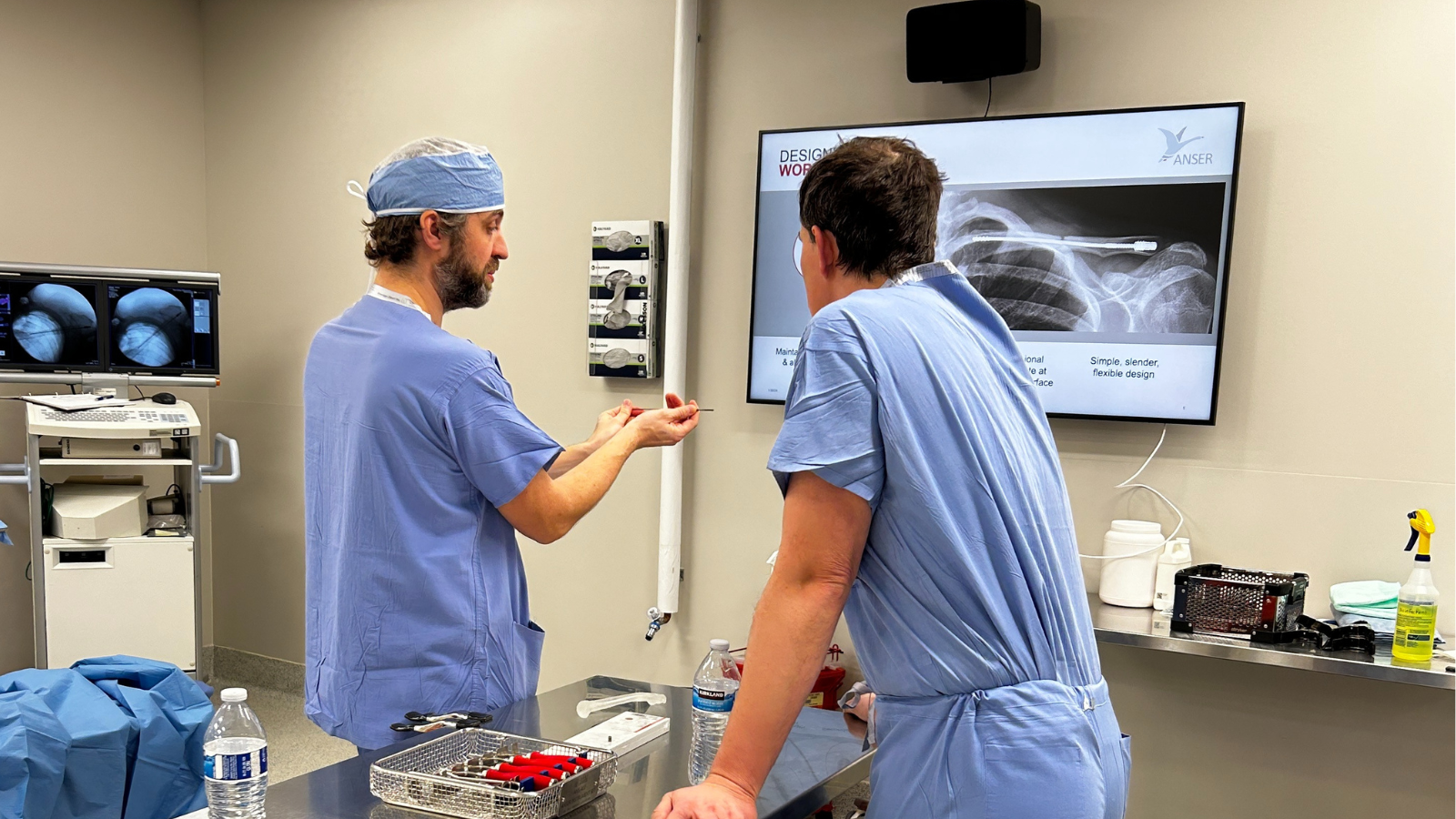
Dr. Hoogervorst explains pin design |
“One Big Rollercoaster”
The journey from concept to a market-ready medical device is akin to riding a roller coaster – a sentiment vividly echoed by Hoogervorst as he reflects on bringing the Anser Clavicle Pin to fruition.
One such challenge faced by Hoogervorst and by many innovators is securing funding, both for patent protection and for further development. Without adequate financial backing, even the most promising concepts can falter before they gain traction. This stage often requires navigating through a maze of investors, grants, and venture capitalists, each with their own criteria and expectations. It's a process that demands resilience and strategic planning.
Setbacks and obstacles are often an unavoidable part of the journey, yet with the right blend of adaptability and problem-solving acumen, the roller coaster can gradually ease into smoother waters.
Despite encountering setbacks, Hoogervorst remained steadfast in his belief in the device's potential to improve quality of life. Through a combination of determination and considerable patience, the project gradually gained momentum.
With a patented device in hand, Hoogervorst began applying for various Dutch and European funds to further fuel development. The successful acquisition of these funds, coupled with additional investments, provided the essential financial support needed to address regulatory obstacles and secure approvals, including certifications from the Food & Drug Administration (FDA) and Conformité Européenne (CE).
Evidence-Based Advancements
After years of research and development, the Anser Clavicle Pin officially made its debut in the operating room in 2017 during its first in-man trial in the Netherlands. Since then, roughly 200 pins have been implanted in patients across various countries, signaling a global reach and growing adoption. At present, the pin is being investigated in a large prospective cohort of 100 patients in Europe.
In recent years, the pin has also been approved for usage within the M Health Fairview system.
Transforming Healthcare for Tomorrow
Dr. Hoogervorst understands that in the demanding landscape of medical school, residency, and even in the early years of practice, it's easy to feel daunted by the prospect of pursuing innovative ideas.
For those navigating the early stages of a medical career, the concept and execution of the Anser Clavicle Pin attests to the fact that original ideas can nonetheless be developed and tested in experimental studies and ultimately redefine the healthcare landscape.
Hoogervorst’s encouragement resonates deeply: "If a current resident or medical student has an idea, they shouldn't hesitate to further explore it, because that may be beneficial for patient care in the future."
Such stories of success remind us that innovation is not only achievable, but imperative for the advancement of medicine. It is a call to action for the medical community to continue pushing boundaries, foster creativity, and collectively shape a future where patient care reaches new heights.
For more information about the Anser Clavicle Pin, please visit www.anserimplants.com.
¹Matthew Putnam, Mollie Vanderkarr, Piyush Nandwani, Chantal E. Holy & Abhishek S. Chitnis (2019) Surgical treatment, complications, and reimbursement among patients with clavicle fracture and acromioclavicular dislocations: a US retrospective claims database analysis, Journal of Medical Economics, 22:9, 901-908, DOI: 10.1080/13696998.2019.1620245

